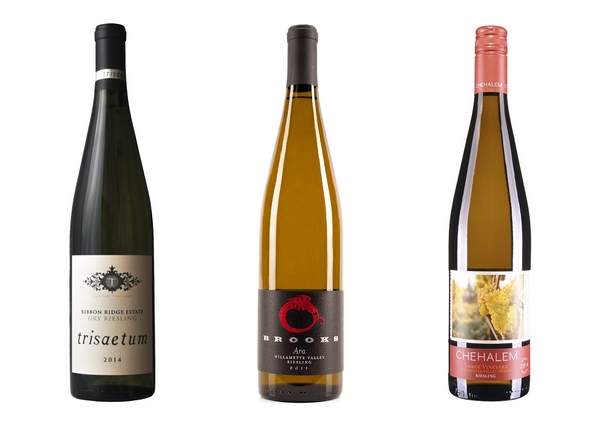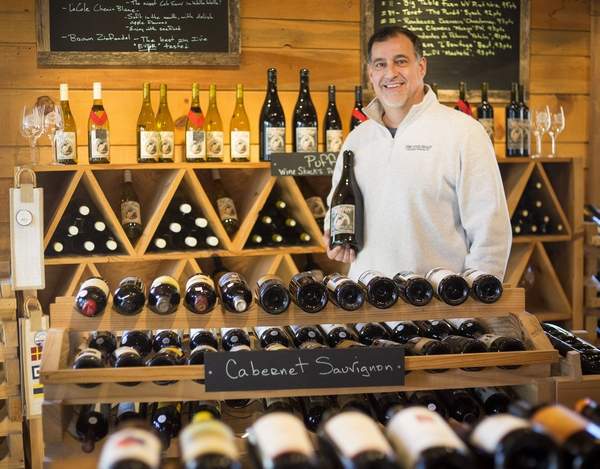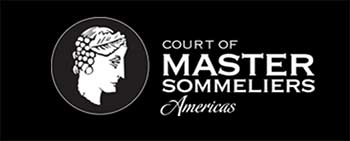How does such an amazing wine become so misunderstood? We can blame California winemakers for a couple of things; chardonnay that tastes like buttery oak planks and rosé that tastes like sweet pink water, but we can’t blame California for the confusion surrounding one of my favorite wines, riesling.

The American wine consumer mistakenly believes all rieslings are sweet.
Riesling traces its heritage back to Germany, where it is that country’s signature wine. German riesling can be made in a variety of styles, from super sweet spatlese or auslese to dry as a bone trocken. For decades, German wineries have tended to ship their sweeter rieslings to the U.S. but not their drier wines. As a result, the American wine consumer mistakenly believes all rieslings are sweet.
During summer, I regularly get asked to recommend a local white wine. When I suggest a riesling to a customer, the typical response is “I don’t like sweet wine.” My opportunity to educate and right the “riesling wrong” presents itself. In fact, most Pacific Northwest rieslings are made in either dry or medium dry (slightly sweet) style, with few sweet rieslings being produced. Likewise, most great German rieslings are now made in a dry or medium dry style.
Because there is such a misunderstanding about riesling sweetness levels, the International Riesling Foundation has created a scale that wineries can use on their back label to inform consumers about the wine’s sweetness. The IRF scale breaks riesling down into four categories; dry, medium dry, medium sweet and sweet.
The pointer indicates where the wine is on the scale. For instance, a wine considered “medium dry” means the wine is mostly dry but has a hint of sweetness. Most Pacific Northwest rieslings fall somewhere in the dry and medium dry range. Wineries that make medium sweet rieslings usually identify these wines for consumers by using words such as “late harvest” or “sweet” in the name. The sweet IRF category is typically used with dessert wines, such as ice wines.

While at Oregon pinot noir camp in June, one of the breakout sessions included an amazing blind tasting lineup, including three of my favorite Oregon rieslings.
I had the good fortune to enjoy Trisaetum Winery’s Ribbon Ridge Estate dry riesling, which has nice acidity and is packed with green apple, starfruit and pear flavors. Trisaetum helps us out by using the word “dry” in the wine’s name, which lets us know that this riesling doesn’t have much, if any, residual sugar. Using the IRF scale, this wine is dry.
Brooks Winery’s Ara riesling has a delicious complexity of flavors, which include apricot and peach, in addition to apple and honeysuckle. This flavor profile leads you to believe the wine is going to be sweet, but, again, this riesling has very little residual sugar. Winemaker Chris Williams uses biodynamically grown fruit for Brooks wine, ensuring each bottle is earth friendly. Using the IRF scale, this wine is also considered dry.
My favorite riesling in the blind tasting was Chehalem Winery’s Three Vineyard riesling, which offered aromas and flavors of ginger in addition to the more classic apple, pear and white flowers. The spiciness combined with a crisp acidity made this riesling special. Chehalem’s riesling is considered off dry, which means there is a bit of residual sugar left in the wine, causing it to have just a hint of sweetness. This wine is considered medium dry on the IRF scale.
If you’re looking for something new during the summer months, give riesling a try. Serve chilled, riesling is food friendly and goes well with cheese platters, salads and lighter fare such as seafood, chicken or vegetarian dishes. Winemaker Chris Williams assures me riesling is delicious with grilled rib eye, but I haven’t tried that pairing yet. It is also delicious with spicy foods, like Mexican or Asian fare since the fruit flavors and crisp acidity cut the heat. You can think of riesling as your mouth’s fire extinguisher.
So, when you think of riesling, don’t immediately think of sweet wine; think of delicious wine. Let the IRF scale be your guide to riesling happiness.
Whatever wines you enjoy, please do so in moderation. We’ll see you again soon at The Wine Shack.


Riesling is my absolute favorite! Mostly because of the sweet, the German in me [and my late fathers side, from Heidelberg], my love for Chateau St Michelle’s Harvest Select Riesling, and the fact that I can tell the waitress a punny “No thank you… I’ll be drinking my dessert!” While pointing to my glass 😉
I hope they stay more towards the sweet side, and leave the dry to Blancs and Chards.
Now, how do I get Puffins to AZ?